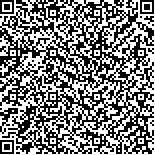杜青,冯珍.正中神经电刺激对脑外伤昏迷大鼠前额叶皮质H1受体表达的影响[J].中华物理医学与康复杂志,2017,39(2):81-85
扫码阅读全文

|
| 正中神经电刺激对脑外伤昏迷大鼠前额叶皮质H1受体表达的影响 |
|
| |
| DOI: |
| 中文关键词: H1受体 Orexin-A 正中神经电刺激 脑外伤 昏迷 |
| 英文关键词: H1 receptor Orexin-A Median nerve Electrical stimulation Trauma Brain injury Coma |
| 基金项目:国家自然科学基金(81260295),江西省自然基金(20132BAB205063) |
|
| 摘要点击次数: 2359 |
| 全文下载次数: 3224 |
| 中文摘要: |
| 目的观察正中神经电刺激对脑外伤昏迷大鼠前额叶皮质H1受体表达的影响。 方法采用随机数字表法将72只SD大鼠分为空白对照组、假刺激组、刺激组及拮抗剂组。采用经典自由落体撞击法将假刺激组、刺激组及拮抗剂组大鼠制成脑外伤昏迷模型,刺激组大鼠于制模结束后给予正中神经电刺激,拮抗剂组于制模结束后向侧脑室注射OXR1拮抗剂并给予正中神经电刺激,假刺激组实验操作与刺激组相同,但干预期间电流强度为0。待实验结束1h后采用双盲法评定大鼠意识状态,于实验结束6h,12h及24h时采用免疫组织化学技术检测各组大鼠前额叶皮质H1受体表达情况。 结果实验结束1h后空白对照组18只大鼠意识状态均为Ⅰ级,刺激组有13只大鼠(72.2%)出现翻正反射,拮抗剂组有9只(50.0%)、假刺激组有5只(27.8%)大鼠出现翻正反射,4组大鼠意识状态组间差异均具有统计学意义(P<0.05)。免疫组化检测发现空白对照组、假刺激组、拮抗剂组及刺激组大鼠H1受体表达呈现逐渐增强态势(P<0.05);实验结束12h,6h及24h时各组大鼠H1受体表达在上述时间点呈现逐渐增强趋势,但各相邻时间点间差异无统计学意义(P>0.05)。 结论正中神经电刺激可作为脑外伤后昏迷的一种有效促醒手段,其治疗机制可能与上调前额叶皮质区H1受体表达有关,且Orexin-A可能在其中发挥调节作用。 |
| 英文摘要: |
| Objective To investigate the expression of H1 protein in the prefrontal cortex of comatose rats which have suffered traumatic brain injury (TBI) after electrical stimulation of the median nerve (MNS). Methods Seventy-two Sprague-Dawley rats (weighing 250 to 300 g) were randomly divided into a stimulated group (MNS+TBI), an antagonist group (MNS+TBI+OXR1 antagonist), a model group (TBI) and a control group, with 18 rats in each group. Traumatic brain injury was modeled in all of the rats except those of the control group. After the modeling, the stimulated group was given MNS, the antagonist group was provided with MNS and an OXR1 injection, and the model group was given MNS with a current intensity of 0. One hour after the experiment, the consciousness of each rat was evaluated using a double-blind method. Animals were sacrificed at 6, 12 and 24 hours after the intervention and brain tissue was removed. H1 protein expression was examined using immunohistochemistry. Results One hour after the experiment, significant differences were observed in the consciousness of the 4 groups, with the 18 rats of the control group on consciousness level one. Thirteen rats in the stimulated group exhibited a righting reflex, compared with 9 in the antagonist group and 5 in the model group. Immunohistochemistry showed that H1 expression was strongest in the stimulated group, followed by the antagonist, control and model groups. The H1 expression was highest at 24 hours after the experiment, followed by that at 6 h and 12 h, but those differences were not statistically significant. Conclusion Median nerve electrical stimulation might modulate wakefulness after traumatic brain injury by promoting H1 expression via orexin-A in the prefrontal contex. |
|
查看全文
查看/发表评论 下载PDF阅读器 |
| 关闭 |
|
|
|